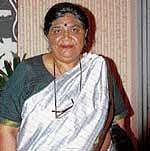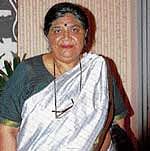

While both Doordarshan and All India Radio have their own archives, there is no archive for electronic news encompassing various channels, even while newspapers and periodicals are getting methodically archived in more than one organisation countrywide.
NMML director Mridula Mukherjee, who is spearheading the project, talks to
Deccan Herald' s Utpal Borpujari on why there is the need for such an archive.
Excerpts:
DH: Can you explain the idea behind the move to set up the electronic media archive?
If you are looking for a newspaper of, say, January 14, 1932, you will get it either in NMML, the National Library or some other place. But if you are looking for the main news of Doordarshan of August 27, 2001, you will not get it anywhere for public access. There is no archive for electronic media news, and that is why the need was felt to set up one.
DH: How will such an archive help people?
Even though public opinion is beingincreasingly modulated by television, there is no archive for anyone who wants to access them later. It's an information black hole that is being created.
It is about preservation of historical records based on audio-visual news. People will be able to use the archive for academic analysis. But we are archiving them only from the present times, and not going into the past bulletins.
DH: Are you coordinating with the various channels?
We are undertaking a study of archival practices of various channels, as we want to be first sure what they are doing.
We have information that the archiving by channels is very random and selective. There is no system with most of the channels of even preserving the most important bulletin of the day. We know that we cannot be the answer to this lack of archiving.
The idea is that we want to intervene in this scenario by asking these questions, doing the survey and the pilot. We want to be clear that we are not setting up a monitoring system. We are purely archiving. The idea is to spread the message to people to be conscious of their own records. Each news channels should have some obligation to preserve one or two bulletins every day.
DH: Why have you chosen only a few channels for the project?
While the desirability is there to archive all, there are so many complications that we don't want to take the plunge fully. We want to first understand preservation and archiving practices by media houses. We have to decide on standardisation of downloading. We cannot keep on increasing the storage space infinitely. There is also the issue of copyright. The pilot project will look at the response from the channels, and what orientation the process should take.
DH: What about audio-visual documents that are outside the realm of news?
We are also buying documentaries related to social issues, with the view of turning NMML into a repository of documentaries from all over the country. We are in touch with a large number of organisations that are dealing with documentary film distribution. We plan to put them up not as film material but as research material.
These films will be viewed by users as historical resource for the academic community.
DH: How will people be able access info?
The idea is to set up a multimedia library. We want to put up all the digitalized films and tapes onto a server available through LAN to the library users, as a kind of a network access server for clients. We are calling it a pilot project since we still do not know what kind of people will use these materials, as we don't have the experience of handling such audio and video materials so far. There will be a system authenticating the person who is going to access them and what are the kinds of things they are looking for. We will take feedback to fine tune and make it user friendly. This is part of a huge digitalisation project involving manuscripts and newspapers and later even books.